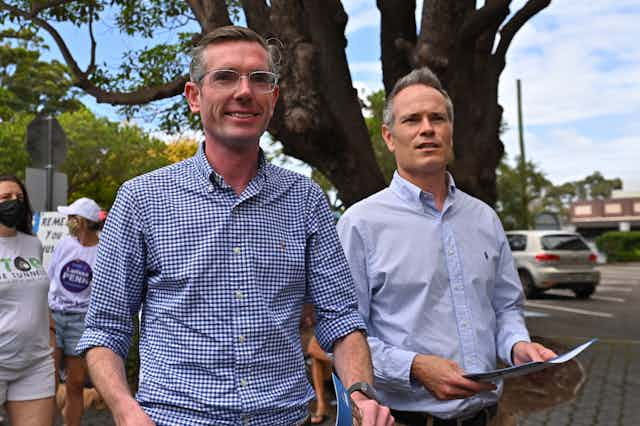NSW state byelections occurred Saturday in the seats of Bega, Monaro, Strathfield and Willoughby. Labor gained Bega and held Strathfield, but the Nationals held Monaro. In Willoughby, the Liberals are likely to hold off an independent challenger.
Current figures could change when postal votes are counted next Saturday, February 19. ABC election analyst Antony Green said postal votes returned so far are over 20% of enrolled voters in Bega, Strathfield and Willoughby, and these percentages don’t include votes in the mail. Owing to COVID, all voters were sent a postal pack, but could vote in-person, early or on election day.
There are also outstanding pre-poll booths in Bega, Monaro and Strathfield. Green said that pre-poll booths not counted on Saturday night will not be completed until Monday.
Bega was easily the best result for Labor. The Poll Bludger’s projection was for a final two party of 56.5-43.5 to Labor, an 11.7% swing to Labor from the 2019 results. Current primary votes are 43.7% Labor (up 13.5%), 36.5% Liberal (down 11.2%), 8.0% Greens (down 2.7%) and 5.6% Shooters (down 1.3%).
In Monaro, Labor had a swing to it, but the Nationals easily retained. The projected two party is 55.3-44.7 to the Nationals, a 4.9% swing to Labor. Current primary votes are 46.9% National (down 5.0%), 33.8% Labor (up 6.4%), 7.5% Greens (down 0.3%) and 6.1% for an independent.
Labor retained Strathfield with very little swing. The projected two party is 54.5-45.5 to Labor, a 0.1% swing to the Liberals. Primary votes are currently 41.1% Labor (down 3.0%), 38.2% Liberal (down 0.8%), 9.5% for an independent and 6.1% Greens (down 2.8%).
The Liberal primary in Willoughby had a large fall, but they would win on current primary votes. The Liberals had 43.5% (down 13.5%) and independent Larissa Penn 32.2%, with 11.9% for the Greens (up 0.8%) and 6.1% Reason. Labor did not contest.
The Electoral Commission selected the Greens as the Liberals’ two candidate opponent, and now need to re-do so it is Liberal vs Penn. With optional preferential voting in NSW, the Liberals’ current lead is enough; the ABC estimates 53.1-46.9 to the Liberals, an 18.0% swing against the Liberal vs Labor two party share in 2019.
Willoughby appears to be the only seat where the large postal vote could overturn the current Liberal lead. While habitual postal voters skew Liberal, it’s possible that progressive voters were more concerned about COVID, and so voted by post. That could offset the normal postal vote skew.
The Bega, Monaro and Willoughby byelections were caused by well-known Coalition MPs resigning, with former premier Gladys Berejiklian resigning in Willoughby, former Nationals leader John Barilaro in Monaro and former transport minister Andrew Constance in Bega.
When an MP resigns, they take their personal vote with them. Labor should have performed better in Monaro, which was Labor-held at the 2003 and 2007 NSW elections. The National margin only blew out from 2.5% to 11.6% at the 2019 election.
Jodi McKay did not become Labor leader until after the 2019 election, so Labor only lost her personal vote as an MP in Strathfield. A near-zero swing is disappointing for Labor.
Green said that, since coming to power at the 2011 election, the Coalition has suffered double digit swings after preferences at every byelection, until the Upper Hunter byelection in May 2021, which the Nationals retained with a 3.3% two party swing in their favour.
In the three seats Labor contested, they had an average two party swing of 5.5%, well below the double digit swings the Coalition has usually copped since 2011.
These byelection results are more consistent with the federal Essential poll last week that gave Labor just a one-point lead after preferences than with the Newspoll two weeks ago that gave Labor a 56-44 lead.
They do not suggest that voters are in a “baseball bat” mood when it comes to either the NSW or federal Coalition governments.
The loss of Bega will knock the NSW Coalition down to 45 of the 93 lower house seats, to 37 for Labor. Two of the crossbenchers are Coalition MPs accused of wrongdoing.

